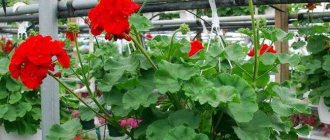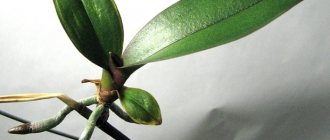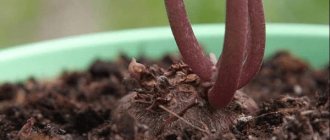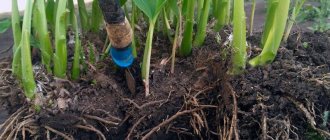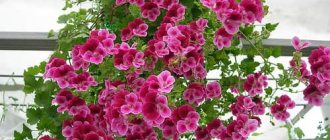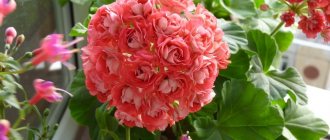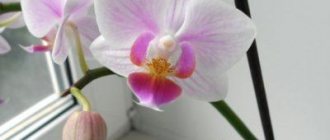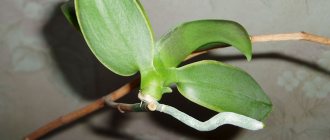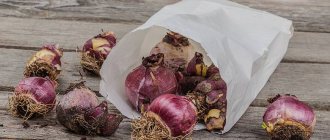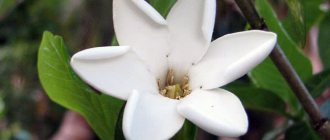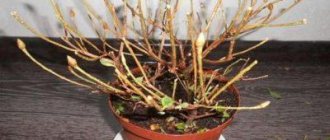About geranium
Geranium acquired an attractive appearance thanks to the work of a breeder from England, George Tradescan. Since ancient times, people have known about the medicinal properties of this flower: an ointment based on geranium juice eliminated lice, and nasal drops treated colds. Even Peter I cured an ingrown toenail with the help of a plant.
Flower growers love geraniums for their lush blooms. The plant is undemanding in care. The flower perfectly purifies the air due to the special substances of phytoncides.
Geranium at home
Author: Galina Goncharuk February 22, 2021 Category: Indoor plants
Like all houseplant lovers, I can't wait for them to bloom. Several years ago, I began to think that it would be nice to have plants that would bloom all year round and would not require special attention, and I soon came to the conclusion that I needed to try growing geraniums.
Geranium , or pelargonium , has more than a hundred species. Among indoor geraniums, the most popular are red, white, fragrant, ampelous and royal pelargoniums. For someone who does not like the scent of regular geranium, scented geranium might be suitable, different varieties of which can have the scent of mint, nutmeg, lemon, apple, or rose. Royal geranium is valuable for its especially large flowers of bright colors. But ampelous geranium looks great in hanging baskets. It seems to me that with a wide variety of geranium species, you can choose a variety to suit every taste.
When is the procedure required?
Geranium transplantation at home is carried out in the following cases:
- The flower is growing, but the root system does not fit in a cramped pot.
- Loss of nutrients from the soil; the plant requires new soil for normal development.
Replanting royal geraniums at home, as well as other varieties, is necessary 2-3 times a year. But there are times when a plant requires an unscheduled change of “place of residence.”
You should not hesitate to transfer in the following situations:
- When the pot becomes small. Roots are usually visible in the holes and can be seen above the substrate.
- If the plant is properly cared for, but it does not grow or bloom.
- When geraniums wilt, the leaves turn yellow and the soil is unable to dry out. The reason may be rot in the root system.
- If the plant needs to be replanted in the fall from open ground to a pot.
It is necessary to treat the plant carefully, as it has a painful reaction to transplantation. It is better not to perform the procedure without a reason. When flowering, the plant cannot be replanted. You must wait until the geranium has finished blooming, otherwise the buds will fall off and the leaves will turn yellow.
There are situations when a transplant is necessary, then the transshipment method can be used. The procedure must be carried out carefully and carefully. If the transplant was carried out during flowering, then initially you need to cut off the flower stalks. In this case, all forces will go to the development of roots.
Planned transplantation is carried out in spring or summer. During the cold period, you should refrain from this procedure. For example, in January the plant requires additional feeding so that it does not lose its original appearance.
Determining whether geraniums can be replanted
You can tell that it’s time to replant a geranium by its appearance. There are certain features that indicate the need for the procedure.
Professionals define this by:
- The appearance of the bush. With proper care and the creation of optimal conditions, the plant stops blooming and growing - it’s time to change the pot and soil to a more nutritious one.
- Condition of the soil. Depleted soil quickly loses moisture even after abundant water treatments. The plant has to be watered much more often than usual.
- Root system. If the roots appear on the surface of the soil and in the drainage holes, replanting the plant in a larger pot is simply necessary.
There is another way to determine whether pelargonium needs to be replanted in the fall, summer or spring. You should carefully remove the plant from the pot, after drying it. It is necessary to act carefully so that the earthen lump does not collapse. Next, you should inspect the soil - if it is completely entwined with roots, then the pelargonium should be replanted immediately. In the case when there is a lot of free soil left, the plant is returned to its original place in the flowerpot, and the replanting is postponed for 6-12 months.
Advice ! It is best to replant pelargonium using the transshipment method, preserving as much soil as possible at the roots. This technique will allow geraniums to undergo transplantation more painlessly and begin to grow much faster.
Is it possible to perform the procedure after purchase?
You can't do this. The flower had already been transplanted in a nursery, then it probably survived several transportations, stays at transshipment bases and warehouses. It then went to the store and to the buyer's home.
Blooming geraniums have received a large dose of stress. Replanting it immediately after acquisition is considered a huge mistake. A period of rest is needed during which the plant gets used to the changed conditions.
Often flowers purchased in a store die after flowering has finished. At this time, you need to treat them with care, control temperature and humidity, monitor the soil in order to prevent maximum negative external influences.
When is the best time to do this?
- In the first case, the crop is transplanted in the fall into a pot (or any vessel intended for this purpose) and removed to conditions suitable for its further life.
- For the second option, the season does not matter at all, because... The transplant is carried out immediately in order to save the flower from death. For points 3 and 4, the optimal time is the beginning of spring, which contributes to better rooting of the plant.
The right time
When is the best time to replant geraniums at home? It is better to do this at the end of winter - beginning of spring. Some gardeners advise planning the procedure from February to April. The flower “wakes up”, so this time is considered suitable for this procedure.
Some gardeners replant in the summer. During this period, the plant is less stressed, and a change of location will not be perceived painfully. It is necessary that the plant does not bloom. Typically, geraniums are transplanted into a pot in the fall if they grew in open soil.
In winter, the procedure should not be performed. Usually the geranium will die because the plant will not have the strength to cope with the sudden change.
When to perform the procedure
Transplantation is a stressful situation for a flower. Therefore, in order to minimize the negative effect of it, manipulation should be carried out at a certain time. Geraniums should be planted in a new pot in the spring. At this time, you can also divide the rhizome and thus propagate the flower. In spring, pelargonium (also called geranium) can even be planted in open ground in the garden. But in the fall it should be moved from the garden to the house.
It is possible to transplant geraniums in the fall. There is no strict definition of time here. But you should know that in winter plants take root much worse than in other seasons.
Flower growers say that the best time to transfer indoor geraniums to a new pot will be the following months: April, March and February. But everyone decides for themselves when to replant indoor geraniums.
Pot
How to replant geraniums at home? Choosing a suitable pot is considered a difficult procedure for beginners. You should not purchase a very large container, since the plant does not require a lot of soil. If a flower is being replanted for the first time, it is advisable to choose a pot 10-12 cm in diameter.
The next transplant is carried out into another pot - its diameter should be 2-3 cm larger. If the container is very large, the soil will gradually become waterlogged, and this will lead to rotting of the root system.
It is better to choose ceramic pots than plastic ones. Many gardeners use clay containers, since this material perfectly removes residual moisture and salts, so the plant grows and develops normally.
Agricultural technology for moving to another pot
When deciding how to replant geraniums, they pay attention to every moment. The choice of suitable soil, the size of the new container and the material from which it is made determine how well the transplant will take place.
Soil selection
How to replant peonies and how to plant them in spring
Pelargonium needs light, loose soil, saturated with useful microelements. Of the substrates offered in the store, soil for begonias is best suited. Summer residents can use the fertile soil from under the trees of their own garden by diluting it with sand.
Home gardeners recommend making the following batch:
- 1 part sand from the river;
- 2 parts each of turf soil and humus.
It is better to take sand in a coarse fraction, this will ensure the necessary looseness of the soil. You can mix it with a small amount of peat or completely replace it with vermiculite.
Pot size and material
When choosing a container for geraniums, take into account the size of the bush. The diameter of the container should be only a couple of centimeters wider than the dimensions of the rhizome.
Note! Even if pelargonium takes root in a spacious pot, it will definitely not bloom. The plant will direct all its energy to the development of roots.
When dividing a bush, it is recommended to take a container with a diameter of 10-12 cm and a height of no more than 15 cm for layering with one root. In the future, when changing the pot, the new container should be only 1.5-2 cm larger than the previous one.
As for the material of the pot, geranium feels more comfortable in ceramics that are not covered with glaze. In plastic containers, despite the drainage holes, irrigation water can stagnate. While the ceramic walls will absorb the excess.
Is it possible to replant flowering geraniums?
Flowering requires a lot of energy from the plant. Therefore, it is worth considering once again whether flowering geraniums can be replanted. Not every pelargonium is able to cope with stress during this period. If there is no urgency, then the plant should be left alone and wait until the inflorescences wither. After 7-10 days, the transplantation begins.
Relocation of flowering geraniums
When it is necessary to take emergency measures to improve the health of the bush (or the pot is broken), the flowering geranium is moved to a new container, following the algorithm described above. But the inflorescences will have to be cut off immediately so that they do not interfere with adaptation. So this season it will not be possible to collect seeds for propagation.
Transplantation as a method of rejuvenation
Young geranium can be kept for 3-4 years in one container. Then the bush not only becomes cramped, it begins to lose its shape. In this case, replanting will be an excellent way to ennoble and rejuvenate pelargonium.
How to rejuvenate geranium
| Option | Peculiarities |
| Pruning shoots | In mid-spring, the shoots on the bush are shortened, leaving columns with 5 growth points. As a result, the plant will produce lateral shoots, and the geranium will acquire a beautiful crown. In the future, a large number of lush buds will appear |
| Dividing the bush | The rejuvenation method is based on the technique of transplanting geraniums, described in the subsection “How to plant a flower” |
| Seminal* | This option is rarely used - it is longer and more troublesome. First you need to get a seed from pelargonium in order to grow a new plant from it |
Bush rejuvenation
*Not every variety of geranium reproduces in this way. Even if a breeding hybrid produces seeds, they are not genetic
Priming
To transplant geraniums at home in the spring, different soil mixtures can be used. Purchased substrates for flowering plants and garden soil are suitable. If land is required for transplanting geraniums, any of the following options are suitable:
- Turf soil is mixed with river sand and humus (2:1:2).
- Sand, peat, garden soil are taken in a ratio of 1:1:1.
- Peat, sand, leaf and turf soil are used in equal quantities.
Before transplanting pelargonium, you need to sterilize the soil. This procedure allows you to clear the land of pests and diseases.
How to grow geraniums at home
Those in whom the experimenter lives can grow geraniums themselves by cuttings or from seeds. For cuttings, an apical shoot about 7-8 cm long with 4-5 leaves is cut from an adult plant. The two bottom leaves are removed and the cuttings are placed in water to grow roots. Anyone who is in a hurry can treat the cuttings with a root-forming agent and immediately plant them in a special substrate, which should consist of an equal amount of peat, garden soil and sand. After the sprout takes root, pinch it off.
You can try to grow geranium at home from seeds , but you need to keep in mind that the seeds germinate very slowly, and about six months usually pass from the moment the seeds are planted to the flowering period.
But if you are impatient or don’t want to bother, you can buy a plant that is already flowering, and then you just need to care for it properly.
Preparation
How to replant geraniums at home? There are no special means to mitigate the effect of transplantation on a plant. You just need to choose the right time. As already mentioned, the plant cannot be replanted in winter and during flowering.
The day before the procedure, you should water the flower, as the soil should be moist. In this case, it will be easier to remove the flower with roots from the pot. Some gardeners recommend the use of growth stimulants, which ensure rapid recovery after a change of “place of residence”.
Choosing the right soil for flowers
In order for indoor geranium to grow as a strong plant with beautiful and bright flowers, you need to choose the right soil (read about the features of growing geranium in a pot here). Selecting suitable soil will relieve the plant from severe stress during replanting, help it easily adapt and establish itself in a new place, and ensure bright flowering (how to replant geraniums?). Properly selected soil is also the key to plant health.
The best option for geraniums is a mixture with a loose texture combined with high-quality drainage.
Indicators when choosing the right mixture for geraniums:
- fertility and nutrition;
- slightly acidic or neutral soil composition.
- soil saturated with beneficial microorganisms;
- the correct mechanical composition of the soil, on which air permeability depends.
Nuances of the procedure
Preparation required:
- new pot;
- drainage;
- soil mixtures;
- scissors;
- knife with a sharp blade;
- settled water.
How to replant geraniums at home? The description of the procedure is as follows:
- Drainage is placed at the bottom of the new container, which can be broken brick or expanded clay.
- Then it is sprinkled with soil mixture.
- The plant should be removed from the old container. The geranium is held by the base, turned over, and then the pot is pulled towards you.
- The roots should be cleaned. Some may dry out or have rotten areas, so they are removed with scissors and a knife. If there is no damage to the roots, then the lump should not be touched.
- The plant is placed in the center of the pot and covered with soil. There is no need to compact the soil.
- The soil needs to be watered.
This is all. As you can see, replanting geraniums at home is not scary. If everything is done efficiently, the plant will take root well and will delight you with its flowering.
Planting and care
In order for your pelargonium to smell fragrant all season, it needs to be provided with comfortable conditions.
The soil for planting is prepared in the fall: after digging, mineral fertilizers and humus are added.
Immediately before planting, the plant is watered abundantly and no more than 12-14 seedlings are placed per 1 sq.m.
The next 2 weeks pay special attention to soil moisture. At home, with the right approach, it blooms for 10 to 12 years, maintaining its picturesqueness
On average, it is recommended to update the pot every 10-12 months as needed.
Large rhizomatous
It is a perennial plant that has an elegant and decorative appearance, producing delightful flowers and greenery. It is often used instead of lawns. In order to avoid problems in the process of breeding this crop, you must follow the following planting rules:
- the soil for planting must be fertile;
- maintain a distance: between bushes 25-30 cm, and between rows from 70 cm to one meter;
- planting algorithm: drainage is laid out at the bottom of the prepared hole, followed by fertilizing, a bush is placed on top and sprinkled with earth.
Rules of care:
- abundant, but not frequent watering (this plant is heat-loving, and therefore tolerates drought more easily than excessive moisture);
- regular feeding;
- timely removal of inflorescences;
- good drainage is a must.
It is better to plant it in sunny and abundantly warmed areas. Partial shade is also perfect. To prevent the plant from freezing, it is recommended to create a shelter for the winter. However, frost-resistant species will winter well without it.
Lugovoy
It is a dense bush up to 120 cm in height. Blooms in mid-summer with blue-purple flowers. Its requirements for planting and subsequent care are no different from other types of pelargonium.
On the street
Although geranium is considered an indoor flower, in warm weather it grows in a flower bed or garden. Some gardeners plant plants in the garden for the summer. You just need to choose the right moment. The air temperature should be high and there should be no frost at night. It is best to choose the end of May or the beginning of June.
How to transplant geraniums into open ground at home? This procedure is carried out step by step as follows:
- You need to prepare the place: the soil is dug up, the depth should be about 35 cm.
- Then you need to create a hole, the diameter of which is slightly larger compared to the diameter of the earthen ball with roots.
- It is necessary to sprinkle the bottom of the hole with special soil.
- The plant is placed in the center of the hole. The procedure must be performed carefully.
- The roots are covered with earth, the soil around the flower is well watered.
These are all nuances. Even a novice gardener can transplant geraniums into a garden bed at home. Usually geraniums are left in the garden until autumn. Some varieties can survive winter in garden beds if conditions are right. But in the fall, it is advisable to replant the plant in a pot and place it on the windowsill at home.
How to replant geraniums
To reduce the risk of injury to the root system, you need to moisten the earthen ball 2 hours before transplanting. After moistening, the soil should not stick to your hands. All manipulations must be carried out with gloves. If necessary, remove leaves or damaged roots, use a sharp knife or scissors disinfected with alcohol.
Planting in open ground requires preliminary preparation. When preparing the site in autumn, you need to dig up the ground, add 10 kg of humus and 20–30 g of superphosphate per m², then dig up again. In the spring, you need to disinfect the soil with a solution of copper sulfate, after 3 days, dig up the soil and apply fertilizer according to a similar scheme.
To another pot
Step-by-step instructions for transplanting pelargonium into another pot:
- Prepare the plants and soil.
- Disinfect the pot with a 1% solution of copper sulfate and dry.
- Fill the container 1/4 full with expanded clay or crushed foam.
- Lay down a layer of soil.
- Carefully transfer the plant to a new pot.
- Align along the root neck.
- Sprinkle with soil and water with warm, settled water.
- Move the plants to partial shade for a week.
If root rot was discovered during replanting, you need to remove the earthen lump and remove the damage. Then the roots need to be washed under running water and immersed in a manganese solution for an hour. After drying the roots, the plants are planted in a new pot. After 3 days, treatment with phytoverm is carried out according to the instructions.
Also find out what to do if geraniums don't bloom.
In open ground
Sequence of actions when transplanting into open ground:
- 2 weeks before planting, begin hardening the plants by taking them out into the open air for 1–2 hours a day, gradually increasing the time interval to 24 hours;
- on the site, acidify the soil with iron sulfate at the rate of 10 g per 10 liters of water, dig up;
- after 2 weeks, make markings for planting holes so that there is a distance of 20–30 cm between plants (the size of the hole should exceed the size of the roots along with the earthen ball by 5–7 cm);
- At the bottom of the pit, place a layer of sand mixed with expanded clay, then a layer of peat and a layer of nutritious soil;
- transfer the plants into planting holes, fill the gaps with nutritious soil and water;
- For the first 5–7 days, provide the plants with high-quality shading.
Video: Transplanting geraniums into open ground
From the street to the potty
In the fall, in September-October, depending on the climate of the region, they begin to replant the plants back into pots and move them into the house.
This is done according to the following scheme:
- prepare containers and soil in advance;
- a couple of hours before transplanting, water the soil with warm water;
- Place expanded clay at the bottom of the pot, then make a sand cushion;
- dig up the plants, shake off the soil, check the root system for damage;
- carefully distribute the rhizome over the container, place pieces of foam in a circle;
- level the plant so that the stem is in the soil at the same level as in open ground;
- cover the roots with soil and water;
- for the first 2–3 days you can keep the pot in an open area in the shade;
- on the 4th–5th day, move the containers into the house to a permanent place;
- prune, shortening the shoots to 20 cm.
Did you know? Geranium can be used as an insecticidal plant when planted near cherry trees. Its smell repels aphids and cherry flies.
Transfer from street to home
How to transplant royal geranium at home from the street to the house? The procedure is carried out before cold weather according to the following instructions:
- The soil around the plant needs to be watered to saturate it with moisture.
- Drainage is poured into the container and sprinkled with soil.
- Geraniums should be dug up with a ball of roots.
- It is necessary to inspect the roots, eliminating excess dry soil.
- Dry and damaged roots are removed. If the root system has become powerful, then it can be trimmed.
- The plant is placed in the center of the pot and covered with soil mixture. Leave 1 cm from the top of the pot.
- The plant is watered moderately.
If you follow all the principles, there will be no problems with replanting geraniums at home. The plant will be well received. The procedure must be carried out carefully.
How to replant: instructions for a gardener
In order for geranium to tolerate transplantation well, work must be performed in several stages:
- Place drainage at the bottom of a suitable pot. You can use purchased expanded clay, crushed bricks, broken pieces from clay pots or small crushed stone, pieces of foam plastic.
- Then the geranium is watered abundantly - such an event will make it easier to pull the plant out of the pot.
- The earthen ball is carefully examined - its complete entanglement with roots indicates the health of the root system.
- If there is a suspicion of a disease or rot, insects, or substrate are detected, the substrate must be completely removed from the roots.
- After cleaning, the roots are carefully examined, all suspicious ones are cut off with a sharp, disinfected knife, scissors or scalpel.
- If most of the root system has been removed, the geranium must be soaked for a couple of hours in a Zircon solution, which will help the plant better survive stress.
- The geranium, in which the earthen lump remains intact, is placed in a new pot, and all voids are filled with fresh substrate.
- For a plant where part of the roots has been removed, the upper part of the root system needs to be slightly deepened, while controlling the location of the stem - it should remain at the same height as before replanting.
- The soil around the stem must be carefully compacted, the plant should be watered abundantly, but not allowed to become waterlogged.
- The pot of geranium is placed in a shaded place for several days, and then returned to a bright windowsill.
Geraniums that have been growing in the garden throughout the summer are replanted in the same way. For such plants, “relocation” to a pot should be carried out in September, before the onset of cold weather.
Care
After this, pelargonium needs careful care, as this process causes stress. If the plant is usually placed on a windowsill from the south or south-east, and the sun's rays fall on it, then after planting it is advisable not to choose this location.
It is recommended to choose a shaded part for at least 1 week, and after that the plant can be placed on a regular windowsill. Moderate watering is necessary, as the soil should not dry out. Although geraniums like dry climates, they should be watered regularly. But too much water causes the flower to wither. Pelargonium cannot be sprayed.
After transplantation, you need to exclude feeding for 2-3 months. The new soil already contains all the components for the growth and development of pelargonium. Then fertilizing is applied once a month. Universal and special products are suitable.
When feeding for the first time, you need to reduce the amount of fertilizer by 2 times the volume specified in the instructions. The rest of the fertilizing is carried out according to the manufacturer’s recommendations.
Care for geraniums at home
I like indoor geranium because it does not require any special care and at the same time pleases with its flowering almost all year round.
Lighting
One of the main conditions for good development of geraniums is proper lighting. The plant is not afraid even of direct sunlight, but a lack of light can lead to the loss of leaves, fading of flowers and even their falling off.
Watering geraniums
Geranium does not require spraying the leaves. Too humid air or too frequent watering can cause more harm to the flower than lack of moisture. Stagnation of water in the roots invariably leads to their rotting. In winter, geraniums require moderate watering, in summer - a little more abundant.
Temperature
Homemade geranium develops well at a temperature of 18-20°C. In winter, the temperature in the room with geraniums should not fall below 10-15°C.
Feeding geraniums
There are special fertilizers for geraniums that take into account all its needs. You can also use universal fertilizers. The frequency of feeding is 1-2 times a month.
Transplanting geraniums
Replanting is necessary if the pot becomes too small for the plant. It is best to replant pelargonium in the spring.
Difficulties during transplantation
During this procedure, geranium is exposed to danger. If you water the plant not along the edge of the pot, the root system may rot. Loosening the soil in the container should be done carefully so as not to affect the roots. In the first week after transplantation, the flower should be protected from direct sunlight.
Often after this procedure the leaves turn yellow. This is a reaction to stress. Yellow leaves are only removed from the shoot. Geraniums require proper care. If you take care of the flower, then after 2-3 weeks everything will return to normal.
How to care for geranium seedlings
Correctly carried out planting procedure is part of a good result. Seedlings need to be grown in favorable conditions. Geraniums require timely watering, correct temperature conditions and good feeding.
First shoots
Watering
The amount and frequency of watering directly depend on the time of year. In hot summers, moisturizing is carried out every 3 days. In winter - once a week. The bottom of the container is laid with a thick layer of drainage. The plant categorically does not tolerate excess moisture. Watering is carried out only when the top layer of soil dries.
Feeding
The first feeding is carried out only 14 days after picking. At this stage, the plant requires potassium and phosphorus. Agricola and Effecton are well suited for these purposes. Fertilizers are applied to the soil from March to October. Frequency – once every 20 days.
On a note! In winter, any feeding is suspended.
External factors
Before growing geranium from seeds, it is important to create the right climatic conditions for it. The flower grows only in well-lit places
But, as with other indoor species, direct sunlight should be avoided. Daylight hours for pelargonium should be at least 15-16 hours. In summer, the plant is taken out into the fresh air.
Due to the fact that geranium leaves are covered with a special protective layer, it is strictly not recommended to spray the species. Any moisture on the stem and leaves can lead to rot on the flower.
The flower painfully tolerates temperature changes. For young shoots this is unacceptable. The optimal air temperature is 20-22 degrees above zero, the minimum is +7 ℃.
Picking
After the first sprouts appear, the seedlings are picked and transplanted into individual containers. The depth should be 2-3 cm. Young flowers are transplanted into small and shallow containers.
Picking a view
Pinching
It is recommended to pinch geraniums at the level of 6-8 leaves. Adult species must be pruned in spring and autumn. Timely pruning of weak and damaged shoots will allow you to get an unusually beautiful plant that will delight you with lush flowering for a long time.
On a note! Pinching should not be carried out during the formation of buds and during the flowering period.
Growing rules
There should be no difficulties in care. But you need to comply with the requirements for growth and flowering conditions. Geranium is a drought-loving plant because it is native to Africa. The plant tolerates a lack of moisture better than its excess.
Flower care is as follows:
- Watering should be done depending on the temperature. Sometimes 2-3 times a week is enough, and often this is done every 10 days. The procedure is performed when the top layer of soil dries. Overmoistening is indicated by limp leaves, lack of flowering, and the appearance of mold at the base of the stem and on the ground.
- The best temperature for this flower is 18-25 degrees. The plant tolerates extreme heat well. In winter, 10 degrees or a little more will be enough.
- Pelargonium likes a lot of sun. It is better to install the flower on a south, southwest or southeast window. Geranium will survive in partial shade, but there will not be much flowering.
- If the soil is chosen correctly, geraniums should be fed once a month. Flowering and healthy appearance are ensured with the help of potassium and phosphorus fertilizers. Flowers also require nitrogen. Special products for geraniums or universal preparations for flowering plants are suitable. To prolong flowering, geraniums are fed with iodine water every week (a drop of iodine per 1 liter of water). Fertilizer should be applied after watering, 30 minutes later. It is important that the soil is moist. In summer, when feeding, the plant must be removed from the sun and then kept in partial shade for another 2-3 hours.
- In the spring, shoots are pruned; no more than 5 growth buds should be left. If time has been lost, the procedure is carried out in early autumn. With the help of pruning, the original shape of the bush is formed and the appearance of a large number of buds is stimulated.
Transplanting geraniums is a procedure that requires care. If you do it correctly, the plant will take root well and will be able to bloom beautifully.
Planting and care
Landing
Growing is possible both at home and in the garden. But it’s better to start with home cultivation, master the care well, and only then start experimenting with outdoor plantings. With the exception of frost-resistant varieties, all the rest will either behave like annuals, or you will have to dig them up every fall and take them home for the winter.
In addition to classic watering, weeding and fertilizing, temperature regulation is added when it comes to home growing. Replanting is often not recommended - only when absolutely necessary.
Lighting
Our guest is from the south, and like any southerner, he loves and needs the sun. South windows will be preferable for him. Only on particularly hot days and hours, it wouldn’t hurt to throw a little shade so that direct sunlight doesn’t cause burns. On the north side, the flower will not be very comfortable; it will seek the sun, stretch and bend, and will bloom much worse. As a last resort, if there is no suitable sunny place, you can illuminate the pots with fluorescent lamps.
Soil and fertilizing
The soil is suitable purchased or from a mixture of garden soil, sand, peat and humus in equal parts. The result should be soil rich in organic matter with good drainage properties. Also, for good drainage, the bottom of the flower pot is filled with expanded clay, small pebbles or broken bricks.
Watering
Watering is simple, but with its own nuances. It is better not to use a water spray for this - high air humidity can only do harm.
It is not recommended to keep plants that need air humidification and spraying nearby.
The southerner tolerates drought well and does not require too frequent watering - once every 2-3 days is enough. On very hot days, if the soil has time to dry out within a day, you need to water it every day. Settled water at room temperature is suitable. The entire soil is watered, but an excess of moisture will cause rotting and death of the bush.
Fertilizers
You will have to feed the plants with fertilizer regularly and relatively often - once every 10 days. Moreover, in hot weather, when watering is done daily, a single dose of fertilizer is divided into 10 parts and one part is applied to the soil every day along with watering.
The fertilizer should contain: low concentration nitrogen, a high percentage of potassium, phosphorus, magnesium, calcium, zinc, copper, manganese, iron, boron and molybdenum.
During the dormant period, feeding is not required.
Temperature
When growing flowers at home, temperature adjustment is added to the usual care measures, taking into account seasonality. So, in the autumn and winter, plantings are stored at lower temperatures than in spring and autumn - this is necessary so that the plant responds to the changing seasons as usual and therefore blooms better.
In spring and summer, the recommended storage temperature is from +20 to +25 degrees, and in autumn and winter, +13 during the day and +6 at night.
Avoid strong drafts and sudden temperature changes, but also do not allow the air to stagnate.
Rest period
Like all living things, plants also get tired and need rest. The optimal rest period is about 2 months. To do this, stop watering and feeding from the beginning of November. In a couple of months, your beauties will have a rest and from the beginning of January you can resume caring for them.
Trimming and pinching
Pruning is a whole gardening art, which sooner or later every amateur will have to learn. And houseplants are best suited for this.
It is necessary to trim the bushes so that there is not too much greenery, so that the plantings are neat, do not grow and retain their shape. Pinching also has rejuvenating properties.
How to prune pelargonium correctly
Basic recommendations:
- In the fall, when the flowering period has already passed, old leaves and branches and peduncles that are exposed longer than the stem are removed.
- Using a utility knife or a good pruner, young branches are trimmed diagonally above the leaf node.
- Be sure to treat the wounds with charcoal, manganese solution or crushed activated carbon.
